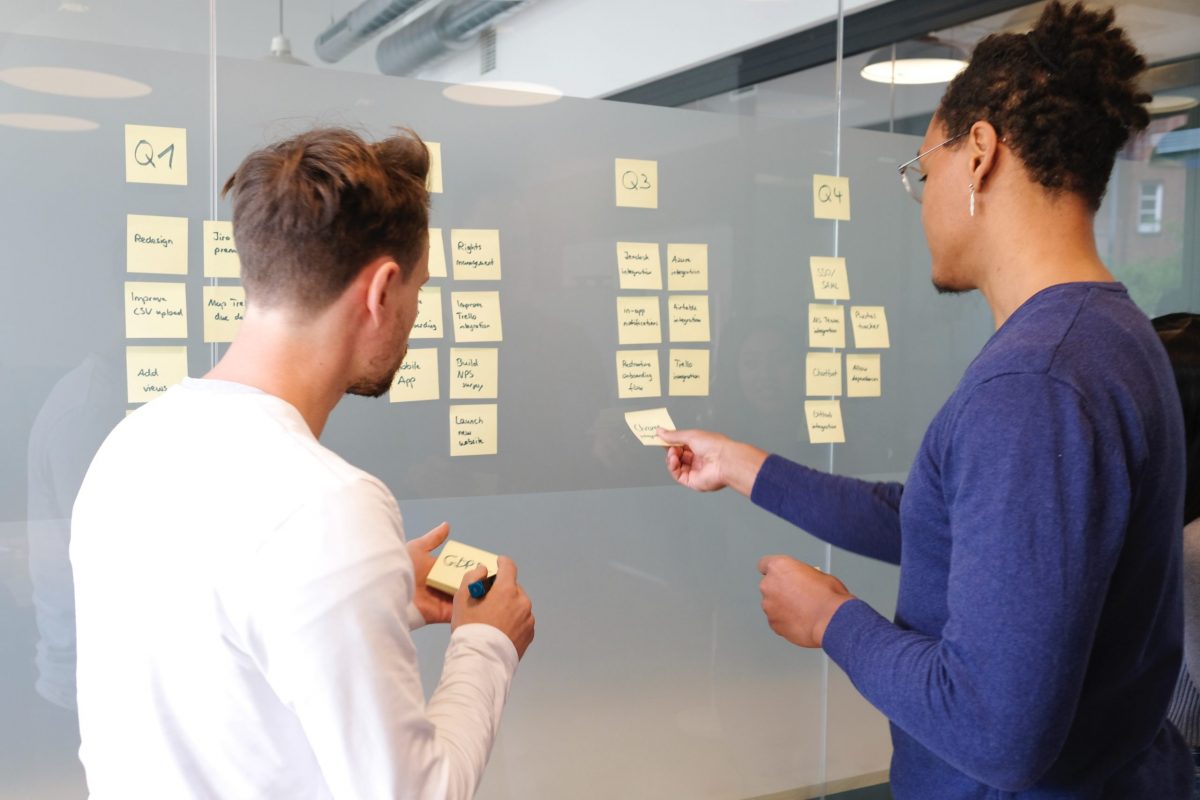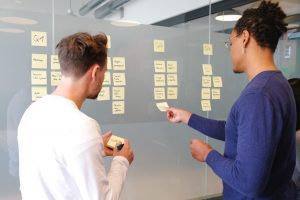Have you ever lived a glorious leadership offsite, where you felt in your bones the newly forged bond with your peers, your mission as a company, and your dreams about the constructive culture you were going to lead by example? How long did that euphoria last? How far did that momentum take you and your team before the friction of ‘business as usual’ slowly and painfully eroded enthusiasm and brought you back to the grind? Were your commitments to each other strong enough to endure the first breakdowns post-summit? In this second article of a 3 part series, we explain the focus of the next 100 days of the new leadership team in its safe descent back to base camp.
In the first article of this series, we laid out what we believe makes a clear roadmap to success for the first 100 days of a CEO and the ‘new’ leadership team that results from the appointment. We shared the lessons gleaned from accompanying team members through five stages, along individual and collective tracks, all the way from base camp to the peak. We find the metaphor of a climbing expedition a fair reflection of the effort it takes to build trust, manage conflict, reach commitments, uphold accountability and focus on collective results. Good expeditions reach the summit and celebrate that feat, for sure. However, great expeditions believe that reaching the peak is but another step in the journey.
Given the importance of the next steps and inspired by Fred Kofman’s Four D’s, which he described in his book “The Meaning Revolution”, we work to ensure that teams return to business as usual in a masterful way.
DEFINE the standards of behavior
 One of the first outcomes of the leadership team journey described in the first article is that participants can clearly articulate who they want to be and what they are going to do differently. How would they achieve better results if they simply continued to do the same old, same old? The norms about how people are expected to behave at an organization are what we call their desired culture. Therefore, explicitly stating how everyone is expected to act could be considered their cultural manifesto.
One of the first outcomes of the leadership team journey described in the first article is that participants can clearly articulate who they want to be and what they are going to do differently. How would they achieve better results if they simply continued to do the same old, same old? The norms about how people are expected to behave at an organization are what we call their desired culture. Therefore, explicitly stating how everyone is expected to act could be considered their cultural manifesto.
How are leaders expected to lead in this culture? The honest, specific response to this question by the top leaders defines their so-called leadership manifesto. These are just two examples of how a leadership team can explain the standards, so their aspirations become something they can measure, discuss, and disseminate. These need to be more than just posters on a wall.
DEMONSTRATE the standards of behavior
The shadow of the leader is long; therefore, the leadership team needs to walk the talk. Declaring how they expect to act is one thing, while actually doing what they declare is another. Paraphrasing Gandhi, the team that reached the peak needs to become the change they wished to see when they defined the behavioral standards for the company. They must be willing to share their struggles and their accomplishments as they learn to live and embody the defined standards. To this day, we found nothing more powerful than leading by example.
DEMAND the standards of behavior
The standards that the leaders defined are of no use if every single member of the team does not uphold them. As standards usually express an aspiration, there is typically a gap between where they are and where they want to be. That is OK if they show curiosity about the impact that having that gap has on others. It becomes part of the learning process as long as they explicitly link their actions to their attempts at bridging that gap. Holding people accountable shows that they are serious about their manifestos. They can do this by discussing breakdowns to learn from struggles and actively catching people doing the right thing.
DELEGATE accountability for the standards
When everybody holds everyone else (including the leaders) accountable for behaving according to the set standards, there is an intentional ripple effect. Leaders who take this return to base camp seriously grant everyone permission to call them out if they do not behave according to their leadership manifesto. There are no double standards. The culture manifesto naturally becomes ‘the way we do things around here’ without a second guess. The expected behaviors become the norm. Aspired culture becomes the actual, current culture. Another way of calling this D is “Disseminate”, as it empowers more leaders to be culture carriers and scales up the new leadership standards. It means facilitating an environment where others can empower themselves to shape the culture and become responsible for propagating it by repeatedly demonstrating, demanding, and delegating accountability in a virtuous cycle.
These four D’s are a simple-to-understand, challenging-to-execute process for establishing or revamping culture norms at your company. Stay tuned for this series’ third and last article to learn what happens to this new CEO and leadership team in their Next Normal. See you there!


 This is precisely how innovation in a corporation works. It is a hard job, with multiple tasks and things to do. You might be working on designing a new solution, defining the precise value proposition, and trying to get the buy-in from different stakeholders. Suddenly, an apparently simple problem is holding things up, and you might feel like it is the end of the world. You feel shame. You question your value, your capabilities, your management skills, or even your work.
This is precisely how innovation in a corporation works. It is a hard job, with multiple tasks and things to do. You might be working on designing a new solution, defining the precise value proposition, and trying to get the buy-in from different stakeholders. Suddenly, an apparently simple problem is holding things up, and you might feel like it is the end of the world. You feel shame. You question your value, your capabilities, your management skills, or even your work.


 When we start to
When we start to 



 The second aspect that made this program different was that it was not designed as the typical immersive, residential, intensive x-day workshop. Instead, we scheduled shorter interventions several weeks apart. This design was deployed before the pandemic, so the sessions were held face-to-face. Nevertheless, this concept has survived to this day as a valid structure for most of our hybrid or purely online leadership development journeys.
The second aspect that made this program different was that it was not designed as the typical immersive, residential, intensive x-day workshop. Instead, we scheduled shorter interventions several weeks apart. This design was deployed before the pandemic, so the sessions were held face-to-face. Nevertheless, this concept has survived to this day as a valid structure for most of our hybrid or purely online leadership development journeys.


 Then, eventually, there was a point when I realized that the pain of not doing anything was larger than the pain of change. So, I started my
Then, eventually, there was a point when I realized that the pain of not doing anything was larger than the pain of change. So, I started my 


 Organizations place a lot of value on leaders who can effectively lead others through change. In fact, effective change leadership is a common competency used to identify and develop high potential employees.2 However, despite the importance that both leaders and organizations place on change leadership, many organizations lack an intentional strategy to help their leaders become effective change-makers. Many of us are guilty of having used the ‘sink or swim’ approach disguised as ‘on the job learning’. Intentionally or not, we throw our up-and-coming talent into leading changes in an environment that is increasingly complex and unpredictable without the benefit of a foundation to help them along the way.
Organizations place a lot of value on leaders who can effectively lead others through change. In fact, effective change leadership is a common competency used to identify and develop high potential employees.2 However, despite the importance that both leaders and organizations place on change leadership, many organizations lack an intentional strategy to help their leaders become effective change-makers. Many of us are guilty of having used the ‘sink or swim’ approach disguised as ‘on the job learning’. Intentionally or not, we throw our up-and-coming talent into leading changes in an environment that is increasingly complex and unpredictable without the benefit of a foundation to help them along the way.